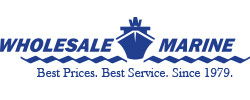Why Your Boat's Engine Oil Maintenance Matters
Keeping your marine engine properly lubricated is one of the most important parts of routine maintenance. Whether you own an outboard, sterndrive, or inboard, regular oil changes are important. They help reduce friction, reduces corrosive buildups, and extends the life of your engine.
Proper lubrication is essential for preventing friction and wear within your marine engine's internal components. Boat's face harsher conditions that inlcude mositure, salt exposure, and high RPM. This is why using the correct marine grade oil is critical to smooth operation and long term durability.
Why Oil Capacity Matters
Eacg marine engine is designed with a specific crankcase or oil capacity. Using too little oil can cause overheating and wear to internal parts. Overfilling can lead to aeration, foaming, and leaks in the system. Both of these can lead to costly repairs down the road if not addressed.
If you're unsure, start by checking the dipstick, checking your owner's manual, or checking out one of our manufacturer specific oil capacity guides below.
- Mercury Oil Capacity Chart
- MerCruiser Oil Capacity Chart
- Yamaha Oil Capacity Chart
- Volvo Penta Oil Capacity Chart
- Johnson Oil Capacity Chart
- Evinrude Oil Capacity Chart
- OMC Oil Capacity Chart
- Honda Oil Capacity Chart
- Suzuki Oil Capacity Chart
- PMC Oil Capacity Chart
- Indmar Oil Capacity Chart
Types of Marine Engine Oil
Marine oils are available in different grades and formulations depending on your engine type and usage:
Mineral / Conventional Oil
- The traditional choice for everyday boating. Provides reliable protection under normal operating conditions, though it may require more frequent changes.
Semi Synthetic Oil
- A blend of conventional and synthetic oils. Offers better protection against heat, wear, and oxidation while still being cost effective.
Full Synthetic Oil
- Deisnged for maximum performance and long-lasting protection. Synthetic engine oil is ideal for high load, high RPM engines or boats used in saltwater and extreme conditions.
Most marine engines, whether outboards, sterndrives, or inboards can use any of these oil types. Always check your owner's manual for recommended viscosity and change intervals.
| Grade | Oil Type | Highlights |
|---|---|---|
| Good | Mineral/Conventional | Cheapest option, breaks down faster requiring more frequent oil changes |
| Better | Semi-Synthetic | Better cold-start protection, resists breakdown, balances cost and performance |
| Best | Full Synthetic | Maximum protection, higher upfront cost but longer lasting |
When to Change Your Marine Engine Oil
Oil Change intervals vary depending on your engine type, usage, and conditions. However, most manufacturers recommend:
Initial 20-Hour Break In Service
For new engines, change oil and filter after the first 20 hours of operation.
Every 100 Hours or Annually:
Regular maintenance helps remove contaminants, moisture, and fuel dilution
End of Season:
Always change oil before storing your boat. Fresh oil prevents corrosion during the off season.
Marine Engine Oil FAQs
► Should I change my oil before storing my boat for the season?
Yes. Fresh oil prevents moisture, acids, and contaminants from sitting in the crankcase, helping protect your engine during long-term storage.
► What happens if I overfill or underfill my engine oil?
Overfilling can cause foaming and poor lubrication, while underfilling can lead to overheating and premature wear. Always fill to the correct level indicated on the dipstick.
► Can I use automotive oil in my boat engine?
No. Automotive oils aren’t formulated for marine conditions and lack the corrosion protection needed in high-moisture or saltwater environments. Always use marine-grade oil.
► How do I know how much oil my engine needs?
Check your engine’s owner’s manual or capacity chart. Capacities vary depending on engine type, size, and configuration.
Questions about Gear Lube Capacity?
Check out our Complete Gear Lube Guide for more info and capacity charts!
Still have questions or need extra help? Reach out and let our experts provide the advice you need. For quick assistance give us a call at 877-388-2628 or email sales@wholesalemarine.com and we'll be sure to get back to you promptly!
